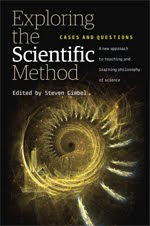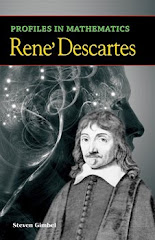Philosophy of Science at the Supreme Court
It's not often that philosophers of science get to talk about cases before the Supreme Court, but the high court just heard arguments concerning the scope of patents and medical discoveries that raises interesting questions about the nature of scientific statements.
The case:
Metabolife holds a patent on a test for vitamin B deficiency that is based on the fact that the deficiency can be linked to high levels of an amino acid called homocysteine. So far, nothing strange. Enter LabCorp, a competitor who comes up with a different test for vitamin B deficiency. LabCorp's test measures homocysteine levels through a different mechanism and so is a different test, but relies on the same correlation as Metabolife's test, a correlation discovered by Metabolife's researchers. Metabolife is suing LabCorp for infringement, arguing that the correlation is an essential part of the test. Even though LabCorp's test assesses homocysteine levels by a different mechanism, at its heart, the test is the same and therefore violates Metabolife's exclusive rights under its patent.
Philosophical question:
What is the intellectual property here, the test or the correlation? Is the correlation something to which we ought to grant ownership rights? Intellectual property is the result of creative intellectual activity. We give copyrights to people's writings and we patent new inventions because they involve novel ideas and executions of the ideas, but facts of the world are a different matter. Knowledge belongs to everyone. Is the correlation an invention or a discovery?
Reflections on science:
There are two main traditions in the philosophy of science when it comes to how we look at scientific theories.
One (we call it the syntactic view) holds that theories are collections of sentences that are either true or false. Newton's theory of mechanics is comprised of his three laws of motion and Newton's theory is true just in case an object at rest remains at rest and an object in motion remains in uniform rectilinear motion when subjected to no external forces and a whole lot of other stuff in Latin. We look for true laws of nature and when we think we have them, we look for cases where they don't work and when we find one, we throw them away and look for new ones.
The other (the semantic view) contends that theories are sets of models. Scientists create representations of parts and processes of the world to explain their properties and workings. Crick and Watson's model of DNA was just like a seven-year old building a model car, except they had no excuse for all of the empty tubes of glue laying around. Unlike sentences, models are neither true nor false, they are better or worse. If you looked at model cars made by two children, you could say that one looked more like the car than the other and therefore is a better model; but the better model is not true, just a better representation.
While there is a long history of philosophical discussion between the two camps, let's just look at what difference it seems to make in this case. It seems that if we take the syntactic view seriously, then the correlation is a proposition which is true and that fact of the world is something that is, in principle, independently discoverable by anyone. But if we think of theories as sets of models, then the correlation is part of a model and more like the result of a creative act, an invention. Under this interpretation, the correlation seems to be more like the sorts of things we do grant protection for.
So are scientific regularities discovered facts or created models? Seems like the answer will have some effect on how we view the Supreme Court's eventual decision.




